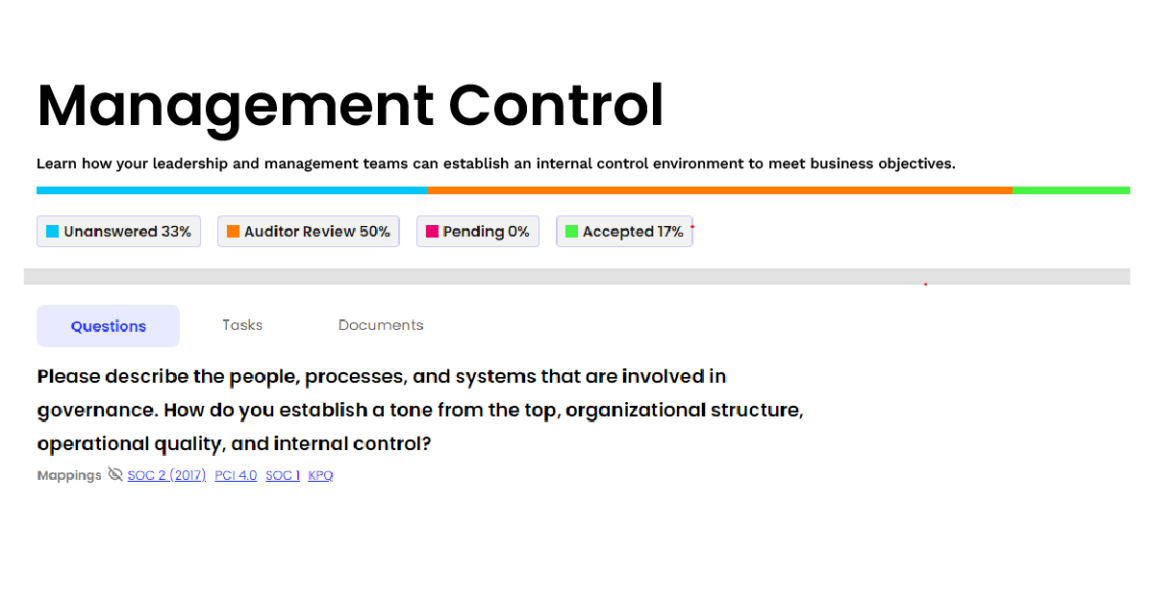
The audit process can seem daunting, but it doesn’t have to be. When you hire an auditing firm to streamline the audit process, you avoid many of the unknowns that usually plague organizations on their compliance journeys. At KirkpatrickPrice, we use the Online Audit Manager (OAM) to streamline the audit process and give you the assurance you deserve when completing an audit. Whether it’s your very first audit or several that you do annually, the OAM can be a game changer.
Changing the Game with the Online Audit Manager
The Online Audit Manager is an audit delivery tool that allows KirkpatrickPrice to streamline the audit process for an organization. This online portal guides the user through audit objectives, requirements, and necessary documentation all in one place. Whether your organization has multiple audits or a single audit, the OAM allows you to streamline the audit process and combine the necessary compliance requirements into easily managed tasks.
With the online portal, you can communicate with the auditor, receive remediation guidance, prepare effectively for your onsite visit, and manage progress in real time. Why would you settle for a complicated, chaotic audit process when you can choose to streamline the audit process?
The Benefits of Streamlining Your Audit Process
1. Know Where You Are in Your Audit:
One of the greatest benefits when you streamline your audit process is that your organization knows the exact stage of the audit process that you’re in at all times. You don’t need to wonder what is left or if you need to do anything else to fulfill compliance objectives. You can simply log into the Online Audit Manager and check your progress easily by looking at the progress bar.

2. Save Time:
When you streamline the audit process, you save your organization a great deal of time. What may have taken hours to discuss during an onsite visit, can be reduced drastically through the online portal. The OAM also allows audit questions to automatically map to multiple frameworks, so you don’t have to waste time answering the same question over and over again. With a streamlined audit process, your onsite visit can focus on assessing your physical controls and reviewing documentation as the preliminary data has already been gathered.
3. Reduce Your Audit Costs:
Conducting an audit without the Online Audit Manager leads to wasted time, and with unnecessary time comes unnecessary cost. With other tools on the market, you’re only paying for the tool, not the actual audit where you’ll receive a report you can show off to your clients and competitors. Our online portal is a part of our audit cost, so there is no extra charge for using this platform. By working with a firm that has an innovative tool and is qualified to deliver quality audit reports, your organization reduces the need for extra costs. Quality audits are expensive, but streamlining your audit softens the cost to your organization.
4. Simplify the Audit Process:
The most important benefit to your organization is that the Online Audit Manager dramatically simplifies the audit process. Completing an audit is a big deal for an organization and any tool that provides clarity and simplification to the process is a tool your organization should use. The Online Audit Manager is the simplifying tool you have been looking for. Because the OAM can handle integrations for automated evidence gathering and 50+ compliance frameworks, you’re able to complete multiple audits within one tool. The days of using multiple tools and multiple firms to remain compliant are over. The Online Audit Manager paired with experts who care will help your audit feel a little less complicated.
Streamline Your Audit with KirkpatrickPrice
In many aspects of our lives, we’re looking for simpler, more efficient ways to get work done. Why is the audit process any different? To get the most out of your compliance journey, your organization needs to streamline the audit process. If you have questions about how you can streamline your audit or would like a demo of the Online Audit Manager, connect with a KirkpatrickPrice expert today so you can start accomplishing your compliance goals.


